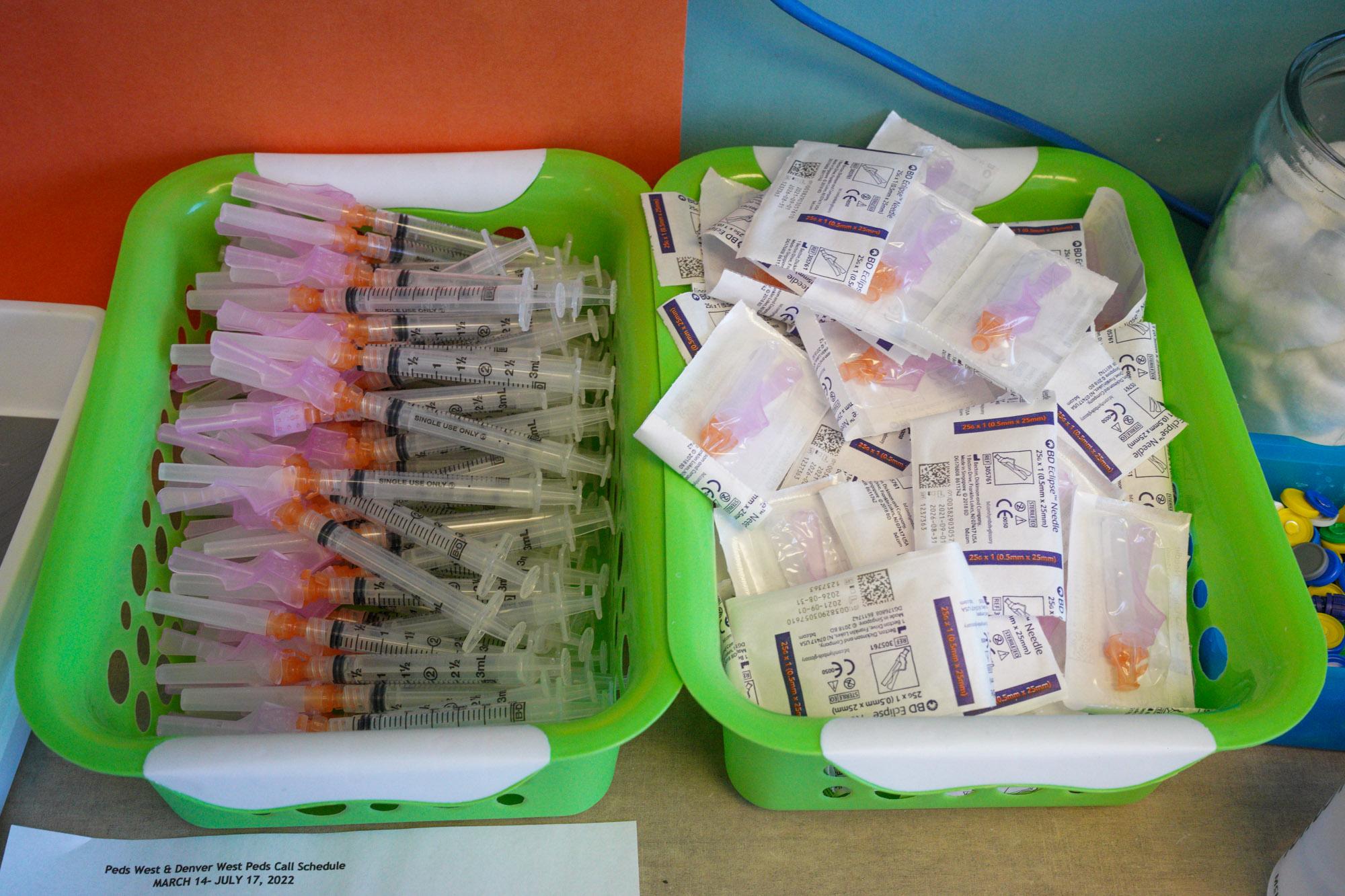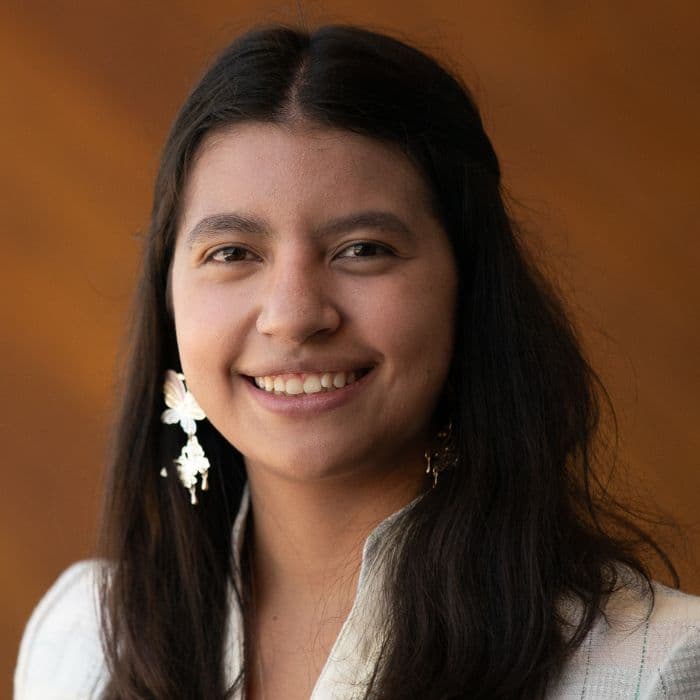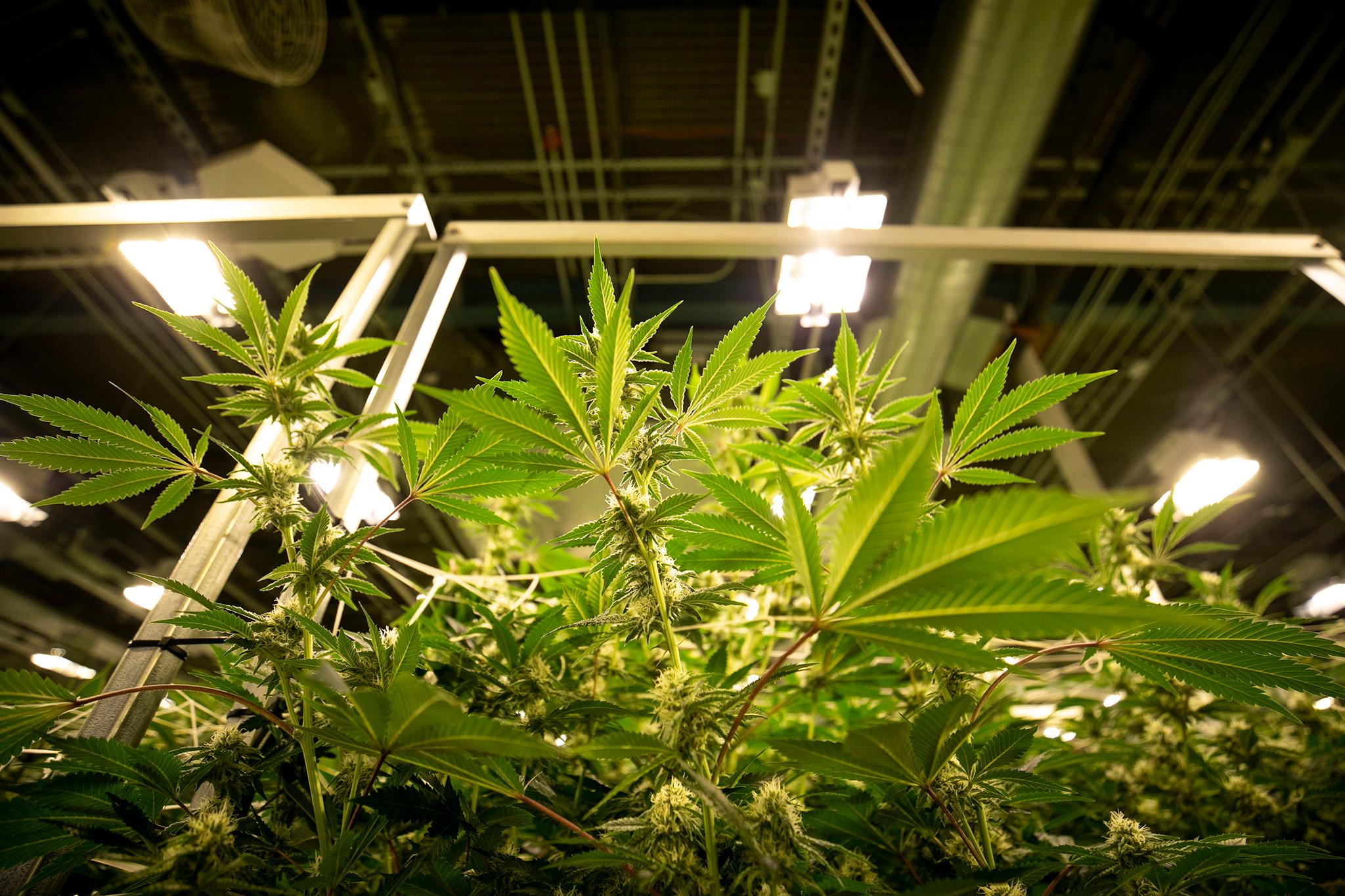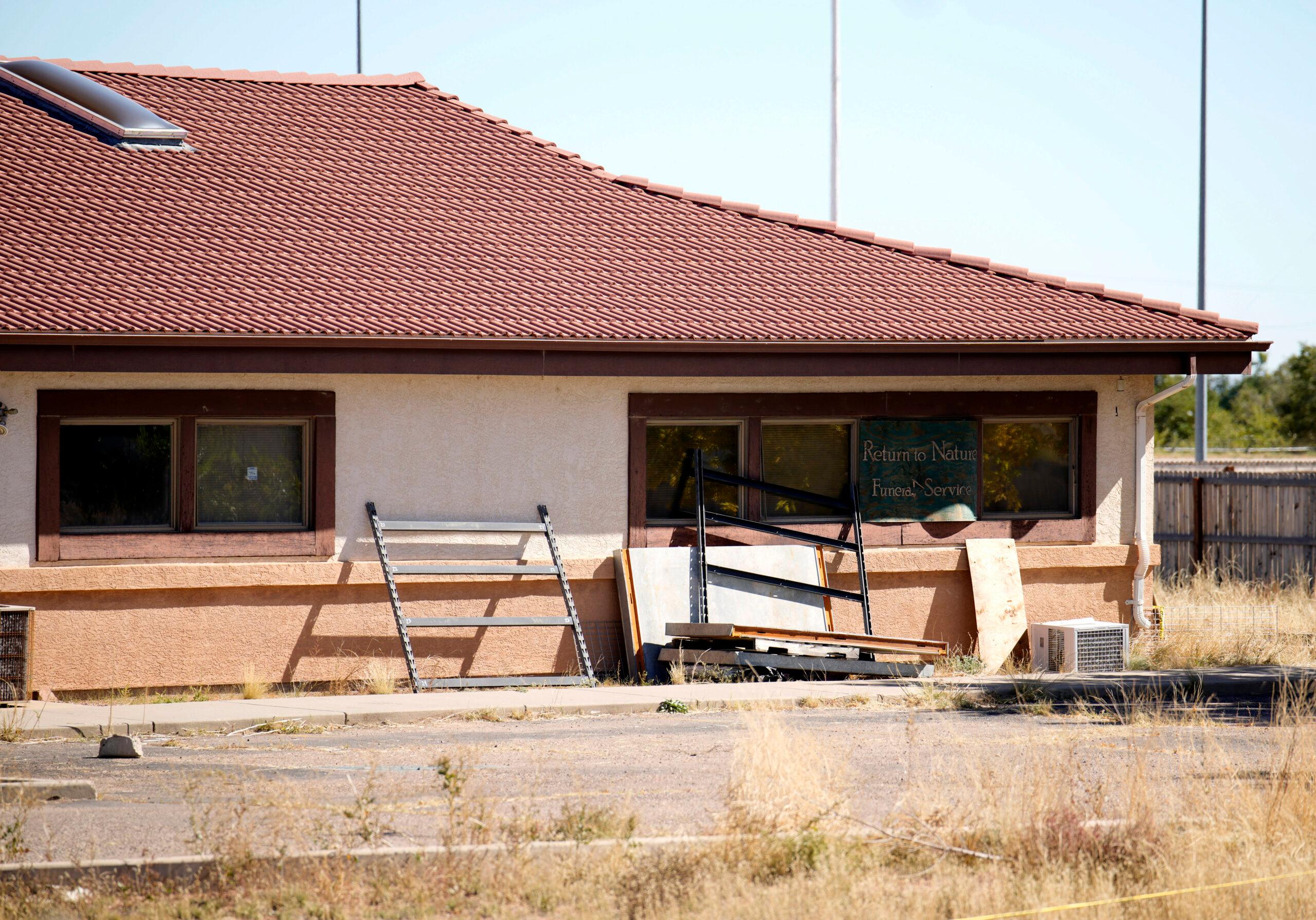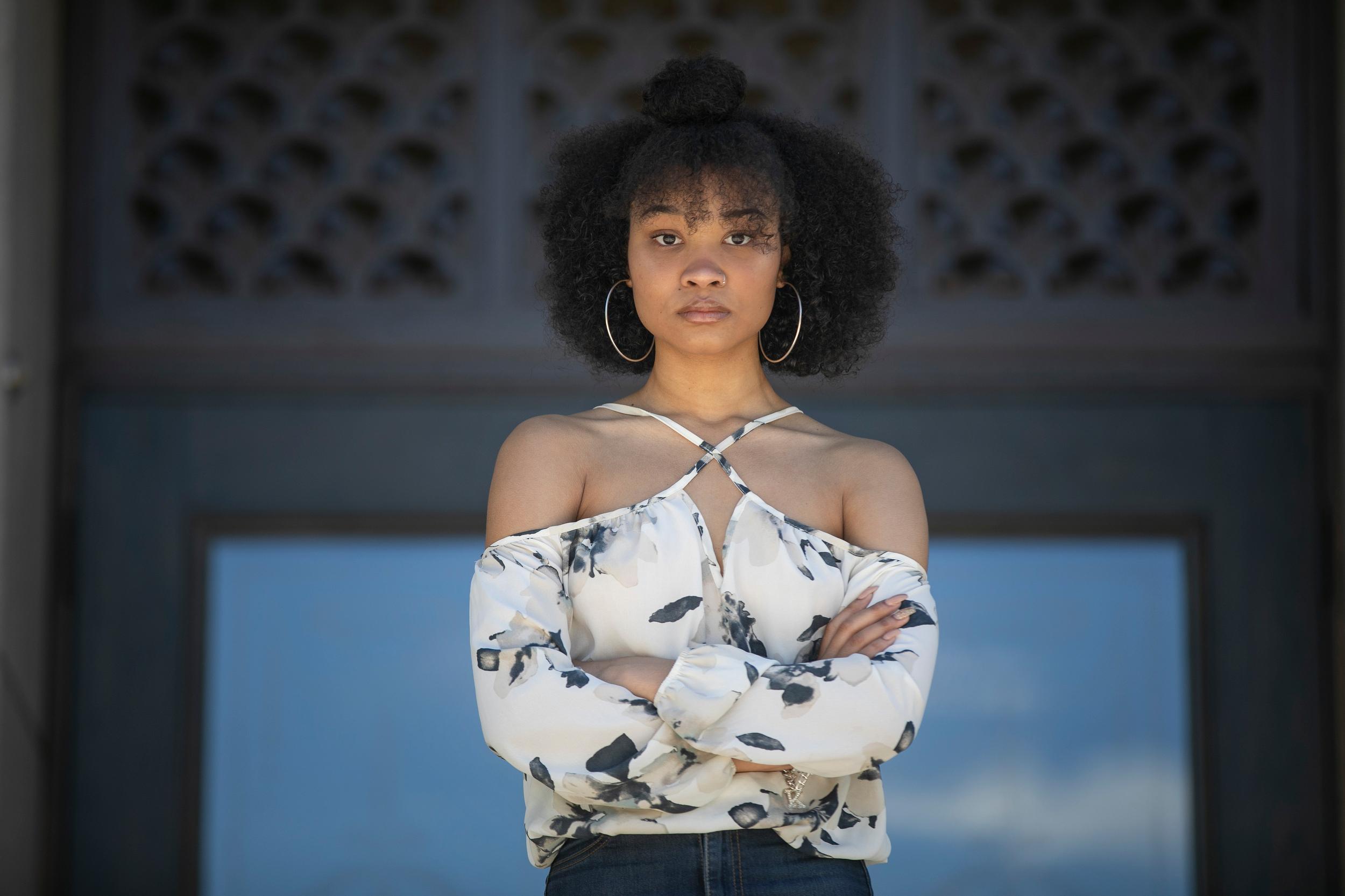
The year was starting, as was an intern’s day at the Colorado Capitol.
It was shortly after the Colorado legislative session opened in January, back before the coronavirus disrupted our lives and protests over racism and police violence engulfed our streets.
Shayana Dabney was interning for the state Senate president, Pueblo Democrat Leroy Garcia Jr. In all, four interns from Colorado State University Pueblo, where Dabney will be a senior in the fall and is president of the Black Student Union, were carpooling from southern Colorado two days a week to work in Garcia’s Denver office. Along with Dabney, who is black, the group included three young men, one Hispanic and two white.
As the group entered the Capitol one morning Dabney and her Hispanic colleague were wearing identification badges, as all the interns had been told to do. The first to go through the door and past a security guard was one of the white interns, who was not wearing his badge and drew no attention. The guard, though, questioned Dabney and the Hispanic intern about what they were doing at the Capitol and examined their badges.
“It was interesting, seeing him (the white intern) walk through the door even though he had no badge, and we were stopped,” Dabney said.
She remembered the moment as one of many in her life — and not even the only one in her short stint as a Capitol intern — in which she has felt she was being told that, because of racism, she was out of place.
Nathan Adams, the lead pastor at Denver’s Park Hill United Methodist Church, has learned his arrival at other churches led white families to leave. Torrence Brown-Smith, a recent graduate of the University of Northern Colorado, has been followed while shopping. Adams, Brown-Smith and Dabney are black and have been speaking up about racism in years past. They spoke to Colorado Public Radio about this especially intense period in our country’s race relations.
Three Americans. Three lenses on what it means to be African American in Colorado in 2020, a year not even half over and already packed with global drama — disease, death and demonstrations.
Nicki Gonzales, who is a member of History Colorado’s State Historian’s Council and an associate professor of history at Regis University. said: “There’s something different about this moment. There’s an urgency.”
Neither Adams, Brown-Smith nor Dabney are historians. But each reflected on history as they reviewed where they — and we — are today.
Dabney informed her supervisor about being stopped as she entered the Capitol that morning. She was told that the guard would be spoken to but that little could be done unless there was evidence he made of habit of racial profiling.
“There was no real visible consequence,” Dabney said.
It left her questioning whether she should continue the internship.
She also told her mother about the incident, saying that led to an emotional exchange.
“Perseverance was the theme of that conversation,” Dabney said.
Such conversations were common in her family. Before she started kindergarten, she said, her father “sat me down and told me this was the reality of my situation."
“My father told me when I was young that I had to work twice as hard for half as much. And then some,” she said.
He explained that the double effort was necessary because she was black, and the extra because she was female.
Dabney was expected to excel at the schools she attended in Colorado Springs, where she was born, as well as in Italy and Philadelphia as the family followed her father on his Army assignments. The political science and history major is nearing graduation from CSU Pueblo, where she’s made the dean’s list. Dabney said her plans for the future keep changing. She may take a year off before pursuing further political studies, perhaps at Georgetown.
“I really am, short-term, passionate about running for school board in Colorado Springs,” she added, saying she would run for a seat on the board for Colorado Springs District 11, the district where she attended school.
District 11 is more heavily minority than Colorado Springs as a whole, with 50 percent white students in a city that is nearly 80 percent white.
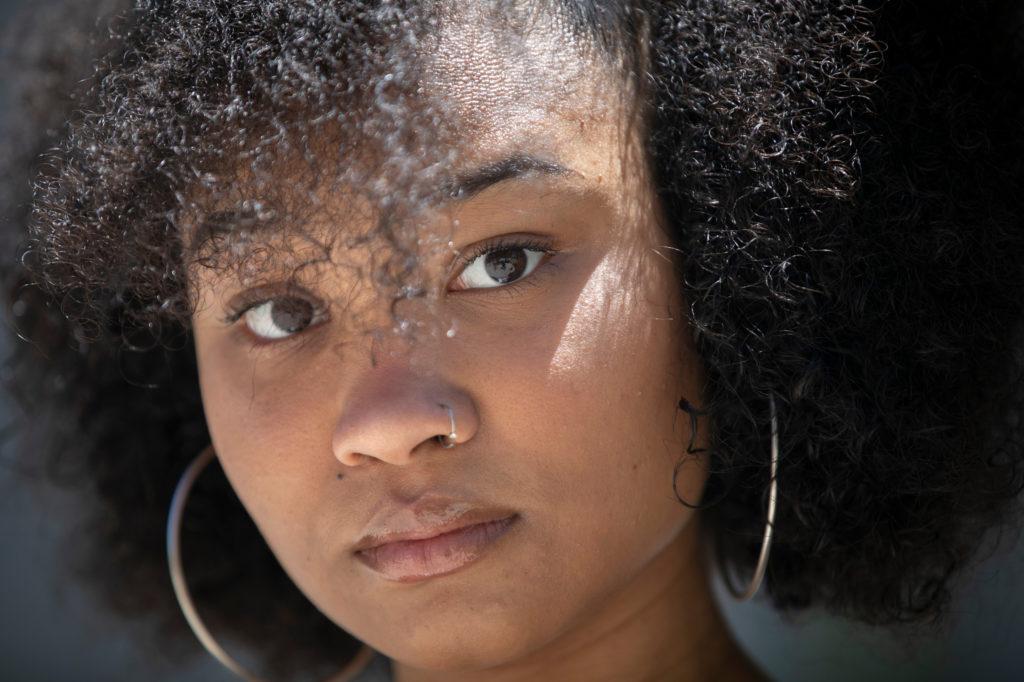
As she traveled to other schools to compete as a member of the track, softball and cheerleading teams at Mitchell High School in Colorado Springs District 11, Dabney said she saw that other districts had better buildings and sports facilities.
“The best way to change that would be at the school board,” she said.
Dabney is interested in making policy. As a legislative intern, she saw another element of government: constituent services. Dabney’s main duties were monitoring emails to keep track of what was of concern to the people back in Pueblo that Garcia represents. As the scope of the coronavirus impact began to become clear, Dabney said she saw legislators trying to conduct business as much as possible as usual amid “a definite sense in the air that things were going to change.”
On March 14, the Colorado House and Senate on a voice vote approved suspending the session because of the coronavirus. The day before in Louisville, Kentucky, Breonna Taylor, a 26-year-old black emergency room technician, was shot and killed in her home by police who had used a battering ram to crash in. Police reportedly believed a drug suspect had used her apartment to receive packages.
Dabney’s internship came to an abrupt end with the halt in the legislative session. Instead of returning to her off-campus apartment in Pueblo, she went to her mother’s home in Colorado Springs. Her sister, then a freshman at Temple University, also returned to Colorado Springs. The sisters finished out their school years online while their mother’s job at Connect For Health Colorado, Colorado’s state-run insurance exchange, moved to work-from-home.
Her family’s life has not been severely impacted by the coronavirus, Dabney said.
“And that I recognize as a blessing,” she said, aware that the pandemic has devastated many, and has hit African-American and Hispanic families particularly hard.
Generations of living with barriers to health and wealth erected by racism have left black Americans with higher rates of underlying conditions such as diabetes, heart disease and lung disease that have been seen to contribute to the worst effects of COVID-19. Black Americans also are more likely to work in jobs that can’t be done from home, increasing their exposure to the virus. Across the country, African Americans are dying from COVID-19 at rates nearly two times greater than would be expected based on their share of the population.
The inequity that is the legacy of a history of cultural and legal restrictions on minorities in America has been underlined by the coronavirus.
Take education, where the shutdown of schools to try to stop the spread of COVID-19 has moved lessons online, even though poor families, many of them black, lack access to the internet. The consultants at McKinsey & Co. are predicting that the average student could fall seven months behind because of school shutdowns, while black students could fall 10 months behind and Latino students nine months.
The coronavirus’s impact on the economy has led to Great Depression-era unemployment. It’s not felt evenly. White unemployment was 14.2 percent in April, while black unemployment was 16.7 percent. Gonzales, the historian, said the joblessness adds to frustrations that long preceded the pandemic.
At Denver’s Park Hill United Methodist Church, Rev. Adams prepared for the pandemic to do its worst. He started a digital spreadsheet to help him keep track of what he feared would be high numbers of families connected to the church impacted by COVID-19. The numbers did not get too high for him to manage, but having the document allowed him to see that those affected were largely African American.

“That’s when we started noticing, looking at that sheet,” Adams said, relaxed in his office in jeans, a black face mask and a black T-shirt emblazoned in rainbow colors with a United Methodist mission statement: “Resist evil and injustice and oppression in whatever forms they present themselves.”
Adams oversees a church that welcomes LGBTQ clergy, an issue that has split the global Methodist community. He shares his campus with Temple Micah, a Reform synagogue. Earlier this year, a Mexican man moved into the Park Hill United Methodist to avoid being deported.
But perhaps the most radical thing about Park Hill United Methodist, where a “Black Lives Matter” flag flies on the lawn, is that it’s a place where blacks and whites worship together. The church models a vision of unity and equality that has been only fitfully embraced in America, whatever Thomas Jefferson might have written in 1776.
Racist real estate covenants and bank lending practices had ensured Park Hill was a white neighborhood until the 1960s — as similar restrictions across the country had helped relegate black Americans to second-place social and economic status. When black families did start to move to Park Hill, whites fled. J. Carlton Babbs, Park Hill United Methodist’s pastor in the 1960s, was among whites who supported the integration of the neighborhood. Babbs knocked on the doors of black residents to invite them to his church, leading some of his white parishioners to leave his congregation.
Adams grew up in Canton, Ohio, in a neighborhood that was multiracial. He went to college in Florida where he met his wife and, after a stint back in Ohio to attend seminary, started his ministry work. One advantage of switching to Zoom sermons because of the coronavirus is that his sister back in Ohio can hear him on Sundays.
He heard that when he broke the color bar as part of the leadership team at other multi-racial churches since starting his ministry career in Florida, white families left because of his presence.
“It’s heart-wrenching. It’s frustrating,” Adams said of learning that parishioners have left because of his race. “Especially when you know that you’re working hard … you know that you definitely measure up.”
When Adams heard that Park Hill needed a pastor, he did some research and determined its history and values suited his own. And when he arrived in 2017 at Park Hill, Adams was not the church’s first black pastor. He feels he fits in and is welcomed by church members of all races.
A marathoner, Adams also was drawn to Denver by Colorado’s reputation as a haven for runners.
On Feb. 23 in the southern United States where Adams had once worked, a black man went jogging. Ahmaud Arbery, 25, was shot and killed in Brunswick, Georgia that day after being followed by two white men — Gregory McMichael, a 64-year-old former police officer and retired investigator with the local district attorney’s office, and his 34-year-old son, Travis McMichael. Local prosecutors initially recused themselves, with one defending the actions of the McMichaels, who told police they armed themselves and chased Arbery in a truck because they thought he was a burglar.
Arbery’s death did not gain national attention until early May when a lawyer for Arbery’s family released a video that raised questions about the McMichaels’ account of Arbery’s death. Adams remembers that as he went out for a run a few days after the video was released, he was thinking about an essay he needed to write for the church newsletter that goes out every Friday. Since services were suspended because of the coronavirus, Adams has come to see the newsletter, along with Zoom sermons, as an important way to connect with his congregation.
Adams said he does some of his best thinking while he’s running. That Thursday morning, he decided to share with his congregation what else running means when you are black. His resulting newsletter essay describes the precautions the pastor takes for fear of encountering people such as the McMichaels, who along with a neighbor who tried to block Arbery during the chase were eventually charged in his murder.
As he runs, Adams wonders: “What if? What if?”
Any runner might take some of the steps Adams takes, such as making sure his wife knows where he is going. But he’s more mindful than most of his appearance.
“Do I look like a runner?” he asks himself.
“I wear a lot of singlets, running tank tops, so it looks a little more athletic,” he said.
He makes a point of greeting everyone he sees, trying to impress upon them that he is friendly, not a threat. He worries about startling those he passes.
While living in the southern United States, Adams had trucks swerve toward him, and as they roared off, spotted Confederate flag stickers on their bumpers. At a June 4 legal hearing in Georgia that ended with a judge ruling the defendants would face charges in Arbery’s death, an investigator testified that body camera footage showed a Confederate flag sticker on the toolbox of Travis McMichael’s truck.
The investigator at that Georgia hearing also testified that Travis McMichael uttered a racial epithet after Arbery was killed. The same epithet has been hurled at Adams on his runs in Colorado.
“I run five to seven days a week,” Adams said. “And this is what I’m dealing with.”
Adams wrote about running while black and has responded to members of his congregation who reached out to continue the conversation after reading his essay. The way he looks into the middle distance when he describes the swerving trucks and the shouted insults makes clear the discussion takes an emotional toll.
“Whether we want to or not, I don’t think we have the option to say, ‘No, I don’t want to tell my story,'” Adams said, saying such stories could propel white listeners to take action to end racism.
The May 25 death in of another black man, George Floyd, under the knee of a white police officer in Minneapolis so soon after he had written about Arbery’s death left Adams, at least for a moment, questioning the power of storytelling.
Addressing white parishioners during his May 31 Zoom sermon, Adams said black and brown Americans were “exhausted. We try to tell you our stories and so oftentimes you dismiss us.”
“We’re exhausted. We’re fearful. We’re angry,” Adams said.
In his interview, Adams expressed his frustration with a rhetorical question:
“Can we just get through the pandemic without reminding us that our lives don’t matter as much?” Adams said. “The pandemic’s already doing that.”
The term systemic racism sounds academic. It has a real impact on individuals and their families in opportunities denied to buy homes and thereby build wealth. In high penalties paid for what might be dismissed as rambunctiousness if an adolescent is white, but put him on the path to prison if he is black.
“It permeates our lives,” said Dabney, the former legislative intern. “It’s as simple as seeing a police car and having to be concerned.”
It’s not just men and women in uniform. Black Americans are always alert to the possibility that as they go about their day, a teacher, a department store saleswoman, a gas station attendant, a stranger in a park might decide to police their behavior or appearance, confident that history and tradition give authority. Those vigilant whites might be armed. Or feel justified in calling in armed backup by dialing 911.
Brown-Smith has as a sociology student at the University of Northern Colorado researched the phenomenon known among academics as racial battle fatigue. Brown-Smith describes it as PTSD from being “constantly bombarded” by racism.
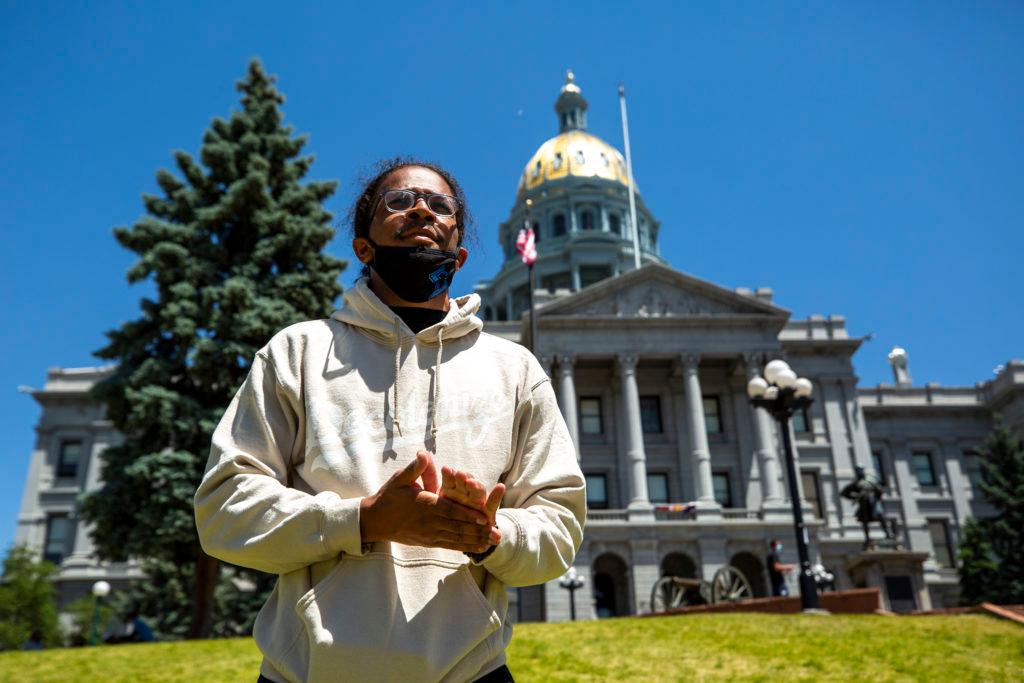
Brown-Smith said he has felt such racial battle fatigue symptoms as lack of motivation and lack of appetite after hearing of events such as the 2014 death in Ferguson, Missouri, of Michael Brown, an unarmed black teenager who was shot and killed by a white police officer, or the 2018 death in Sacramento, California, of Stephon Clark who was killed in his grandparents’ back yard by officers who said they thought he had a gun but found only a cell phone.
Closer to home, last year Colorado Springs police shot and killed De’Von Bailey as he ran from them after they stopped him for questioning about a reported armed robbery.
Also last year, three Aurora officers approached Elijah McClain after receiving a report of a suspicious person wearing a mask and waving his arms. The encounter with McClain escalated and officers used a carotid pressure hold on him before they handcuffed him. McClain was injected with ketamine as a sedative. The 23-year-old went into cardiac arrest on the way to the hospital and was taken off life support a week later.
Brown-Smith, a graduate of Aurora’s Gateway High School, has been pulled over by police officers who pointed their guns at him. He’s been followed in stores.
He said he’s also had opportunities and worked to make the most of them. One of his friends, he said, is a great-grandson of Wellington Webb, Denver’s first black mayor. Webb earned a sociology degree in 1964 from Colorado State College, which would become the University of Northern Colorado, where Brown-Smith studied sociology.
“I’m been lucky to have people like Wellington Webb open doors for me,” Brown-Smith said.
Brown-Smith was among black students leaders from across Colorado who, in response to Floyd’s death, organized an anti-racism and anti-police violence rally on the steps of the state Capitol on June 1.
“Racism runs so deep that it stops our hearts,” Brown-Smith told the crowd, urging black protesters to take care of their health so that they could keep struggling for change.
For the rally, the Capitol steps were lined with photos of people such as Taylor, the black woman killed by police in her Kentucky home. Demonstrators lit candles and placed flowers amid the photographs. The atmosphere resembled that of a funeral, complete with music, poetry, stories passed down by elders, a sense of mourning but also of the potential for connection and healing.
In an interview, Brown-Smith said the national and even global outrage over Floyd’s death could be a moment like the death of Emmett Till, a black 14-year-old who was beaten, mutilated and shot after a white woman lied, saying he had sexually harassed her. Brown-Smith lauded the courage of Till’s mother, who insisted on an open casket at her son’s funeral so that the world could see how he had been tortured. Till’s killing — about which his murderers bragged but for which they were never convicted — galvanized civil rights activists such as Rosa Parks and Martin Luther King Jr.
Floyd’s death could in the short term lead to reforms in policing.
In Washington, D.C., in the wake of nationwide protests, Democrats introduced what they call the Justice in Policing Act. The federal proposal includes mandating that police officers be trained on racial bias and the duty to intervene, banning no-knock warrants in drug cases, and ending the use of chokeholds. If the bill were to become law, it also would create a national registry of information about problem officers to try to keep them from simply moving to new departments.
At the state level, Rep. Leslie Herod of Denver led efforts that resulted in the legislators on June 12 giving final approval to a bill that would, among other things, require all police officers to wear body cameras and abolish the “fleeing felon” statute that allows officers to legally shoot someone running away if they are suspected of committing a felony and are armed. The bill also bans chokeholds and requires officers to intervene in situations when one of their colleagues is acting inappropriately. It now needs only the governor’s signature to become law.
Denver’s board of education, meanwhile, voted unanimously on June 11 to end a contract under which the school district and the police department split the cost of having 18 officers spend their workdays in some of the schools. The school district’s share, which was $721,403 last year, could be shifted to such areas as paying mental health counselors. Advocacy groups have been researching the impact of police in Denver schools and calling for such a reform for years. According to that research, more than 4,500 students, most of them black or Hispanic, have been arrested or ticketed by Denver police officers on school property since 2014.
Gonzales, the historian, said protests have led to change before. She pointed to an example that started small, with four African-American college students sitting down at a Woolworth’s lunch counter in Greensboro, North Carolina, in 1960. That protest grew to include hundreds of people and last for months, leading to desegregation at Woolworth’s. The Civil Rights Act of 1964 prohibited discrimination because of race, color, religion, or national origin in places such as restaurants and hotels.
It should not be overlooked that this is an election year, Gonzales said.
“This is a moment of opportunity,” Gonzales said. “This is a moment to ask for things that will have a lasting effect. Because it’s hard to say no.”
Politicians, she said, don’t want to be seen as being on the wrong side of history.
“You don’t want to be the person who didn’t get on board … the social justice movement,” she said.
It’s also a moment, Gonzales said, when people are looking for leadership, and some are seeing President Donald Trump as providing divisiveness instead. Leadership, Gonzales said, entails listening “to the communities that are most affected by racist policies.”
In an essay published this month by History Colorado, Gonzales looked back 52 years to the report from the Kerner Commission, which had been charged with studying the causes of unrest in American cities in the late 1960s. Many white Americans, Gonzales wrote, refused to accept the Kerner Commission’s “conclusion that racism had created the problems of the inner cities” and heed the report’s call for “new attitudes, new understanding, and, above all, new will.”
Today, Gonzales said in an interview, white Americans are called upon to examine privilege.
“A fairer society would benefit everyone,” she said.
In the long term, Brown-Smith said protests such as those he has helped organize could lead to changes in how resources are allocated to support minorities. He was headed from the University of Northern Colorado to the University of Cincinnati, where he planned to pursue a doctorate in sociology and work to strengthen mental health among black, Hispanic and indigenous Americans.
Adams, the minister, said he sometimes questions whether America is too invested in an economic system that creates haves and have-nots. He’s not sure that what his country wants is “diversity or inclusion or equal rights. Until it is, I’m fearful of what our future looks like.”
But that does not mean, Adams said, he will stop talking to his congregation about building a better future.
“I might be tired. But I’m still going to do it,” Adams said.
Dabney, the former legislative intern, returned to the Capitol, invited to speak at the June 1 rally that Brown-Smith organized. She wore a mask on which was written, “I can’t breathe,” a sentence Floyd can be heard saying repeatedly in a video a bystander made of his last moments. Hand sanitizer was available at the march, and Dabney said attempts were made to social distance. But such precautions against the coronavirus could go only so far in the large crowd around the Capitol.
“We’re risking our health,” Dabney said. “We’d rather die from coronavirus than racism.”
While Brown-Smith invoked Emmett Till, Dabney spoke of Brown v. Board of Education, the 1954 case in which the U.S. Supreme Court ruled that segregation in public education was unconstitutional. Dabney said that just as Brown v. Board of Education was about more than schools, denunciations of police violence now are about more than the police. Fighting injustice has to start somewhere, she said.
“It’s much easier to tackle one … problem at a time,” Dabney said.
The persistence of segregation and racial inequity in education despite Brown v. Board of Education also was instructive, Dabney said. Any victories that come out of this moment will come as a result of patience and focus and will require more patience and focus to be sustained.
Back in March, on one of her last days as an intern, Dabney had been waiting at a street light, heading from the Capitol to a restaurant for lunch. She noticed a white man she did not know arguing with several black women who also were strangers to her. The white man suddenly turned to Dabney and asked her what was wrong with her friends. Dabney asked him why he assumed she knew the women. He said it was because he knew they all worked at the Capitol — though he had not also directed his question at Dabney’s Hispanic colleague, who was accompanying her to lunch. Dabney said nothing more to the man, who called out to her as she crossed the street that she was a “monkey.”
“I just walked and got my lunch,” Dabney said.

